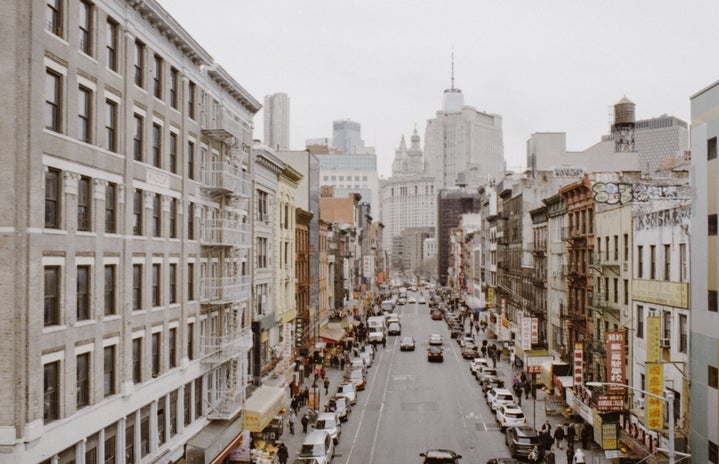New, by definition, is ‘something other than the former.’ It’s a synonym of modern and unfamiliar. It’s other. New grounds to break and old ones to surrender. It’s unabashed and unafraid. An acknowledgement of the past, closely followed by radical action to alter the present. The gift of reinvention.
But who bolsters these abstractions? Better yet, who defines them in the first place?
Consider Emily James Smith Putnam, Frances Amelia Fincke Hand, Dorothy Payne Whitney Straight Elmhurst, Cornelia Solomon Schoeneich, Caroline Tilden Bacon, Charlotte Hunnewell Sorchan, Ruth Standish Baldwin, Margaret Dreier Robins, Katrina Brandes Ely and Mary Harriman Rumsey.
These ten women are among the ‘newest’ innovators of their era: founders of the original New School for Social Research in New York City; and up until fairly recently, their names were absent from history.
The mythos of The New School’s founding has been tied exclusively to male academics for over a century. A group of former Columbia University professors, fired for their outspokenness on US involvement in WWI, formed a collective in favor of the liberalization and expansion of education. They wanted to modernize the ways in which we learn: encouraging students and faculty to engage with current socio-political issues alongside their textbooks and embrace education as a holistic & modern practice, rather than a disparate & archaic one. This account, though true, is only half of The New School’s story, entirely excluding the ten women listed above.
Per early twentieth century policy, the foremothers were acknowledged under their husband’s names on the New School for Social Research founding documents, actively stripping them of their identity and reducing the perceived magnitude of their contribution.
In honor of Women’s History Month and the recent centennial efforts by The New School to honor these ten founding women (and all others who carry on their legacy today,) I have compiled key achievements of each contributor below.
- Emily James Putnam (1865-1944) was a fierce individualist who was renowned for her frequent infiltration of male-dominated spaces. She served as the first Dean of Barnard College, and fought for the rights of her all-female student body, gaining them access to graduate courses at neighboring Columbia University (a feat which many of her contemporaries on this list would take advantage of.) In addition to participating in The New School’s founding, she was one of its earliest professors.
- Frances Amelia Fincke Hand (1876-1963) was a graduate of Bryn Mawr, and worked alongside other female trustees to raise support for women’s higher education.
- Dorothy Payne Whitney Straight Elmhurst (1887-1968) was among the nation’s wealthiest women. She not only made significant financial contributions during and for The New School’s construction, but she nearly single-handedly kept it afloat during the pecuniary crisis of the Depression.
- Cornelia Solomon Schoeneich (unk.) was the human embodiment of fearlessness. She was a prominent activist in Greenwich Village and leader of the New York suffragettes, actively opposing President Woodrow Wilson’s bars of women’s suffrage. She was a co-founder of the Women’s City Club publication, alongside the likes of Eleanor Roosevelt and Ida Tarbell, and fought tooth-and-nail for greater female involvement in municipal policy.
- Caroline Tilden Bacon (1873-1931) was a feminist and professor at Smith Women’s College. The New School’s “Carolin Tilden Bacon Room” is named after her.
- Charlotte Hunnewell Sorchan (1871-1961) was a Manhattan-based designer and philanthropist who took architectural control over The New School’s earliest buildings.
- Ruth Standish Baldwin (1865-1934) was a graduate of Smith Women’s College and The New School’s first female trustee. She was a co-founder of the National League for the Protection of Colored Women and the National Urban League, working alongside POC to bolster their representative opportunities in and outside of educational settings.
- Margaret Dreier Robins (1868-1945) was the president of the National Trade Union League, and fought tirelessly to secure labor-rights for the United State’s earliest women workers. She also founded the First International Congress of Working Women, which created sound doctrine to support working rights and increase female representation on boards that dictate them.
- Katrina Brandes Ely (1875-1927) was a chairwoman for the National American Woman Suffrage Association, and dedicated all of her free time to marches and meetings.
- Mary Harriman Rumsey (1881-1934) was a Barnard Women’s College graduate and late government employee. She worked under FDR during the New Deal era, bolstering and co-authoring the National Recovery Association’s Social Security Act, which is still in place, with her feminist additions, to this day.
These women were unfamiliar, unabashed and unafraid: ‘new’ in every sense of the word. Their presence on The New School’s founding documents, though shielded, was and is a guarantee that more women have equal access to higher education. This special month, and every month, we must recognize and honor their contributions not only to The New School, but the feminist movement at large.


